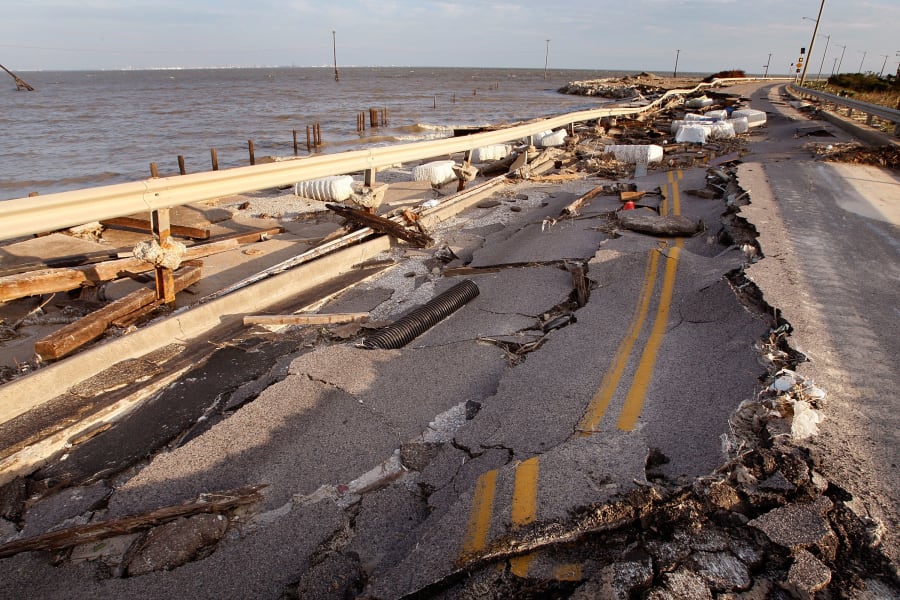Louisville, KY lies on an area of relative safety from various geohazards. Hurricanes ravage our Southern and Eastern neighbors but fizzle before their inland arrival. Tornados tear apart the plains not too far West, and brutally cold temperatures tend to contain themselves to the North. The New Madrid Seismic Zone is found along the borders with Missouri and Tennessee but seldom causes too much damage. In general, Louisville, as well as the state as a whole, is largely protected. Hazards that do happen to occur include flooding, either flash floods or when the Ohio River is exceptionally high, or winter storms.
(Pathway of Hurricane Ike; courtesy of NOAA)
In 2008, however, what remained of Hurricane Ike caused some substantial damage to my city. The storm pummeled the Bahamas and Cuba before making landfall near Galveston, Texas, classified as a category 2 (sustained wind speeds of 110mph) on September 13th. It is currently the sixth costliest hurricane on record, causing local and federal governments a total of $38 billion. By the time it made its way as far north as Kentucky, the storm was no longer causing any precipitation. All of the remaining rain occurred further to the north. In fact, if I recall correctly, it was bright and sunny the day Louisville was affected. What caused all of the extensive damage in its entirety were the extraordinarily strong wind speeds. The storm's effects were felt at home on September 14th: only one day after having made landfall. Wind gusts in the Ohio Valley reached up to 80mph for two hours. These gusts caused 400,000 households to lose power, breaking the previous record but surpassed only four months later by a brutal ice storm that wrecked much of the South and Midwest. Many homes did not regain power for up to ten days, and schools were closed for a week due to power outages. The wind also was able to create waves in the Ohio River that reached up to three feet tall.

(Road in Galveston, TX uprooted by Ike; CNN)
I was six years old when the East felt Ike's wrath. We decided to venture outside to both admire and fear the jaw-dropping winds. It certainly was a strange feeling to be pushed around by the wind and feel like I could be knocked over at any moment, especially as a first-grader who weighed very little. Until Ike, my family used to have a small, cheap, metal "shed" of sorts in our backyard. As we stood outside we could peer over the garage to see said shed moving. We run back to it and begin to try to keep it grounded so that it would not genuinely fly away. My neighbors saw what we were attempting to do and came over to help us. It was a bit of a precarious situation because we had to stay close enough to be able to restrain the shed without getting too inattentive to a point at which the somewhat old and rusty shed could cause serious injury. Fortunately, we were able to remove all that was stored in the shed before the wind became unstoppable because the shed went flying shortly after. I remember watching it whip around in a tornado-esque manner six feet in the air while we tried to pull it back down to the ground. The high wind speeds ripped the sides from the rest of the unit, but we prevented it from evading our grasp.
By the end of the day the storm had toppled thousands of trees throughout the city, ripped up shingles from peoples' roofs, and caused hundreds of transformers to explode. It obliterated our shed, and physically shoved me around, and almost gave me tetanus.
https://www.wlky.com/article/belskis-blog-10-year-anniversary-of-hurricane-ike-hitting-louisville/23164251
https://www.weather.gov/hgx/projects_ike08
https://www.cnn.com/2017/04/27/us/gallery/hurricane-ike-texas-2008/index.html
Comments
Post a Comment